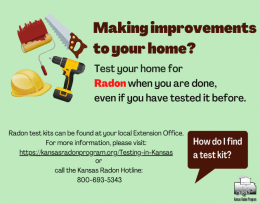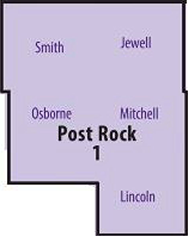January is Kansas Radon Action Month. Winter is an excellent time to test your home for radon gas.
Radon is a naturally occurring colorless, odorless, and tasteless, radioactive gas created by the decay of uranium in the earth’s crust and present everywhere on the planet. Testing for it is the only way of telling how much is present.
Long-term exposure to elevated levels of radon gas increases your lifetime risk for lung cancer. Residential radon gas exposure is the number one leading cause of lung cancer death in the U.S. for non-smokers. The U.S. Environmental Protection Agency recommends actively reducing indoor radon levels when homes are confirmed with 4.0 pCi/L or radon gas or higher.
Quick facts about radon:
- Radon-induced lung cancer is the #1 cause of death in homes. 1 in 4 Kansas homes has high levels of radon.
- Kansas law requires that all radon testing performed during real estate transactions be conducted by state-certified radon professionals.
- The only way to know the radon level anywhere is to test. Radon test kits can be purchased at the Post Rock Extension District offices for $5.50/ea.
- If your home has elevated radon levels, a radon mitigation system will reduce radon to below 4.0 pCi/L in 95% or more of homes.

By: Brenda Langdon


 When we clean our kitchen, we may think about the dishes, oven/stove top, floors, etc. but sometimes we forget about one of the most important appliances…. the refrigerator! Get a fresh start to the year by deep cleaning your refrigerator by following these steps:
When we clean our kitchen, we may think about the dishes, oven/stove top, floors, etc. but sometimes we forget about one of the most important appliances…. the refrigerator! Get a fresh start to the year by deep cleaning your refrigerator by following these steps: